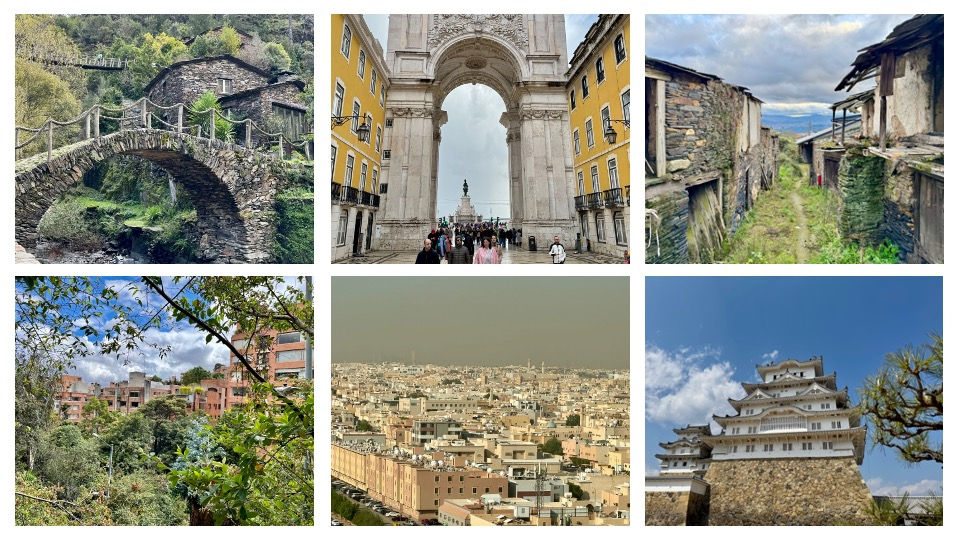The Rise of the Regenerative Trailblazer: Where the City Meets Nature
- Menno
- Aug 21
- 3 min read
The word trailblazer evokes images of explorers cutting through dense forests, marking new paths so others can follow. In the past, this meant taming the wild. Today, it signifies something different, and in our urban century, it means something even more profound. A trailblazer in regenerative urban futures is not driven by conquest but by care. They do not pave over what’s alive; they work with the existing living systems. Their “trail” is not a line of domination through the unknown, but a ribbon of relationships, weaving city and nature, technology and tradition, human and more-than-human life into coherence. We are entering an era where cities hold both past problems and future potential. Today, the urban environment is the beating heart of our civilisation, but too often it beats in conflict with the planet that sustains it. Concrete and glass rise while soils degrade. Populations swell while biodiversity shrinks. Economic growth is celebrated, even when it erodes the very systems that make life possible. The regenerative trailblazer steps into this tension and asks: “What if cities could be places that give back more than they take?”.
The Shift from Sustainability to Regeneration
Sustainability has been the main framework for decades. It has achieved important goals: slowing harm, raising awareness, and setting measurable targets. But “less bad” is no longer enough. Regeneration calls for something bolder. It involves restoring, renewing, and evolving systems so they are healthier, more vibrant, and more adaptable than before. In a regenerative city, clean air and water are not rare commodities but natural results of thoughtful design. Urban economies are not based on extraction but flourish through reciprocity. Public spaces foster belonging, not just efficiency. Moving towards such futures calls for sacred imagination, playful curiosity, creative emergence, brave stewardship, love and care – exploring the unknown and seeing cities not as machines to optimise, but as living systems to nurture.
What sets a trailblazer for regenerative urban futures apart?
While conventional innovators focus on speed, disruption, and competitive advantage, the regenerative trailblazer plays the long game:
Life-centric design – Every project is evaluated based on its ability to enhance life for all species, not just humans;
Systems thinking – Every intervention is considered in relation to the whole, ensuring that solving one problem does not create another;
Reciprocity as a Strategy – Economic, ecological, and cultural exchanges are balanced so that giving and receiving remain in harmony;
Story as a Catalyst – They understand that facts inform, but stories transform. They inspire change through narratives that foster belonging and create possibility [Read about the Storykeeper];
Seva Leadership – Instead of seeking to control outcomes, they create conditions for life to flourish in unexpected ways.
Walking the Unmade Path
Being a regenerative trailblazer is seldom comfortable. There is no map for the future we must forge. The work often involves challenging ingrained systems, speaking truth in rooms where it is unwelcome, and standing firm when others ask you to sacrifice life for convenience. Yet, it also means experiencing moments of profound beauty when a formerly polluted river runs clear, when a neglected site flourishes with community gardens, and when an empty building becomes a sanctuary for both humans and pollinators. It means recognising that the trail is not just for us, here and now. It is for future generations who will inherit the urban environments we shape today.
An Invitation to Step Forward
The regenerative trailblazer is not a solitary figure. Blazing a trail alone is a myth of the old paradigm. This is a collective act. The most impactful urban transformation occurs when architects, engineers, policymakers, artists, activists, business leaders, and community members join forces, each carrying a piece of the vision, each tending to part of the living system. We need many more trailblazers, people who can read the signals of change and translate them into action. People are willing to prototype the urban environment of the future in the streets of the present. People who understand that regeneration is not a project with a deadline but a way of being that keeps evolving.
The Path Ahead
Being a Trailblazer of Regenerative Urban Futures means committing to moving towards life, time and again, even when the path is uncertain. It involves viewing the urban environment – cities, villages, towns, etc. – not merely as a place where we live, but as a living organism of which we are a part, responsible for, and in relationship with. Every trail you forge becomes a gift: to the soil, the skyline, and the species yet to arrive. The forest will thank you. The urban environments will thank you. And one day, future generations will follow your trail, not to find their way out of the wilderness but to venture deeper into the living world we have the courage to restore.
Author:
Menno Lammers





Comments